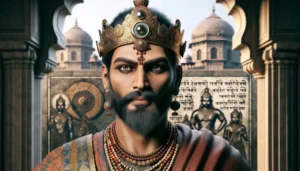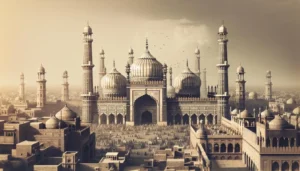Ashoka the Great stands as one of history’s most transformative and compelling figures, an emblem of benevolent rule within the sprawling expanse of the ancient Mauryan Empire. His reign, a watershed in the annals of Asian governance, leaves an indelible mark on the cultural and moral landscape of the region, demonstrating the profound power of conversion and compassion over conquest. Ashoka’s enduring legacy, intricately intertwined with the principles of Buddhism and nonviolence, provides pivotal insights into the moral obligations of leadership and the potential for personal transformation to engender societal change. His story, chronicled in myriad sources, from the edicts that pepper the Indian subcontinent to the annals of ashoka history, reveals a trajectory from ruthless conqueror to enlightened pacifist, making him a perennial subject of interest for historians and moral philosophers alike.

This article will traverse the extraordinary life of Emperor Ashoka, from his early days and ascension to the throne through the seminal event of his reign: the conquest of Kalinga and its profound aftermath that spurred his transformative journey. We will delve into the significant policies and administrative reforms enacted during Ashoka’s reign that have cemented his status within the annals of both the Mauryan Empire and global history as Ashoka the Great. Furthermore, an examination of his legacy and enduring impact offers a lens through which to view not only the historical significance of his rule but also its contemporary relevance in discussions about governance, ethics, and the capacity for individual change. Through the various facets of Ashoka the Great’s empire, policies, and philosophy, this narrative will unfold the epic tale of a ruler whose life and legacy continue to shape historical discourse and ethical considerations across time.
Early Life and Rise to Power
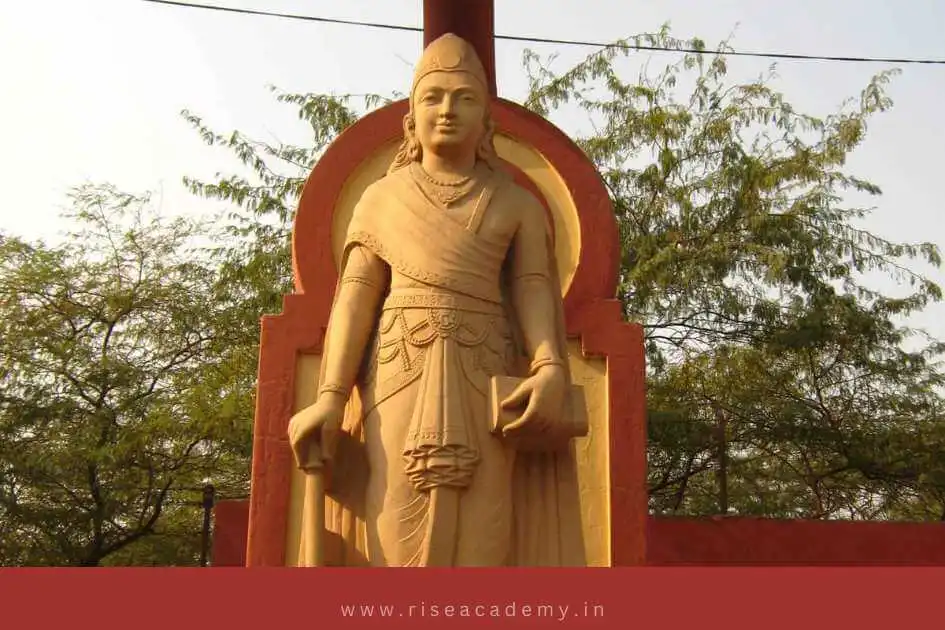
Family Background
Ashoka, born in 304 BC, was the son of the second Mauryan emperor, Bindusara, and grandson of Chandragupta Maurya, the founder of the Mauryan Empire. Despite not being the eldest son and therefore not the heir presumptive, Ashoka’s lineage placed him among the influential figures within the royal family. His father, Bindusara, inherited a vast empire and extended its boundaries further south, although he did not conquer the friendly kingdoms in the Tamil Nadu region.
Education and Training
From a young age, Ashoka received a comprehensive education and training at the royal court. He was well-versed in the Artashastra, a significant treatise on political science and governance attributed to Chanakya, Chandragupta’s prime minister. This education was not just due to his royal status but also prepared him for potential leadership, covering various aspects of administration, martial arts, and statecraft.
Initial Conquests and Appointments
At around the age of 18, Ashoka was tasked with quelling a rebellion in Takshashila (Taxila), a mission he accomplished successfully, although the historical details of this campaign are sparse. Following this, he was appointed as the viceroy of Ujjain, an important commercial and administrative center, where he proved his capabilities as an administrator. His tenure in Ujjain was also noted for his personal life, where he developed a significant relationship with Devi, the daughter of a local merchant, who later influenced his inclination towards Buddhism.
During the war of succession that followed Bindusara’s death in 272 BC, Ashoka emerged victorious, a testament to his leadership and tactical skills, supported by his father’s ministers. This victory marked the beginning of his rise to power, setting the stage for his eventual transformation and the impactful reign that would follow.
The Kalinga War and Its Aftermath
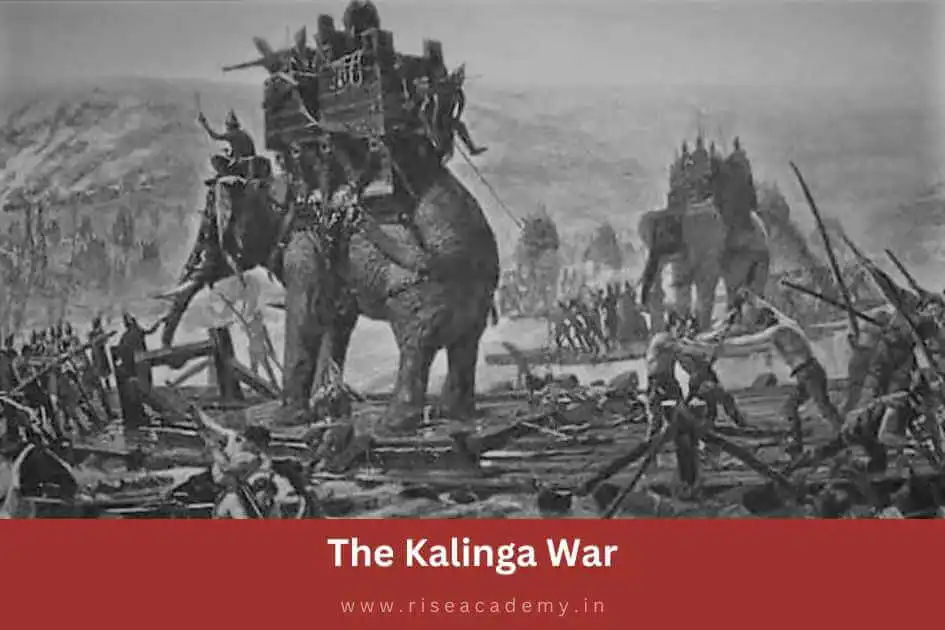
Causes and Course of the War
The conflict known as the Kalinga War was a significant military engagement between the Mauryan Empire, under the leadership of Ashoka, and the state of Kalinga, which encompassed the present-day states of Odisha and southeastern Andhra Pradesh. Historically, Kalinga was a prosperous region, known for its skilled navy and strategic trade routes, making it a valuable target for the expanding Mauryan Empire. The war, fought around 261 BCE, was marked by its ferocity and high casualties, with reports suggesting around 100,000 soldiers and many civilians perished during the conflict.
Kalinga’s defense was robust, characterized by a strong army that included infantry, cavalry, and elephants, as described by the Greek historian Megasthenes. Despite their valiant efforts, the superior military strength of the Mauryan forces eventually overwhelmed Kalinga. The aftermath was devastating, with significant loss of life and substantial numbers of people deported from the region.
Post-War Remorse and Reflection
Following the conquest, Ashoka experienced profound remorse and regret over the destruction and loss of life. This period of reflection marked a pivotal point in his reign and personal philosophy. Historical records, including the Edicts of Ashoka, reveal his subsequent rejection of military expansion and his commitment to ruling with compassion and benevolence.
The immediate effects of the war included widespread devastation in Kalinga, with the landscape marked by the bodies of the dead and the ruins of what was once a thriving state. Ashoka’s own inscriptions describe his horror at the consequences of the conflict, leading him to seek a path of peace and dharma (righteousness).
Ashoka’s Conversion to Buddhism
The transformative impact of the Kalinga War eventually led Ashoka towards embracing Buddhism, which significantly influenced the remainder of his reign and the policies he implemented. His conversion is depicted in various historical texts and inscriptions, where he expresses a deep commitment to the principles of non-violence and moral governance.
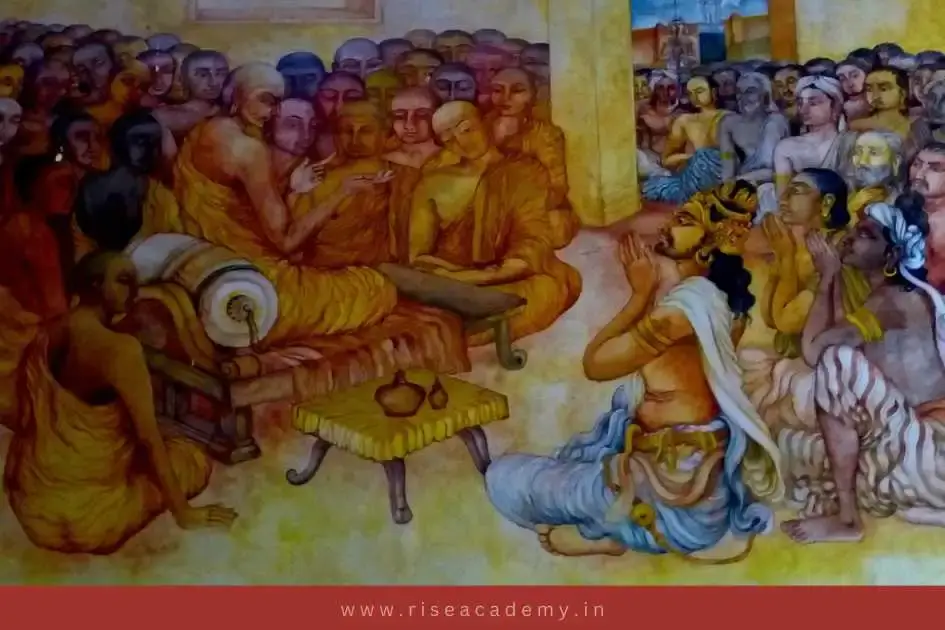
The transformative impact of the Kalinga War eventually led Ashoka towards embracing Buddhism, which significantly influenced the remainder of his reign and the policies he implemented. His conversion is depicted in various historical texts and inscriptions, where he expresses a deep commitment to the principles of non-violence and moral governance.
Ashoka’s dedication to Buddhism was not only a personal spiritual journey but also a public policy. He propagated the ideals of dharma across his empire and beyond, sending missionaries to regions as far as Greece and Syria, thereby spreading the message of peace and ethical conduct. This period in Ashoka’s life highlights a rare instance in history where a ruler profoundly altered his approach to governance based on philosophical and ethical principles, striving for a legacy of peace rather than conquest.
This shift had lasting impacts on the Mauryan Empire, fostering a period of peace and cultural flourishing that lasted for over four decades. However, the pacifist stance also led to military vulnerabilities that eventually contributed to the empire’s decline after Ashoka’s death. Despite these challenges, Ashoka’s legacy as a ruler who chose morality over militarism remains a powerful narrative in the annals of history.
Ashoka's Reign and Policies
Following the transformative Kalinga War, Ashoka the Great embarked on a profound journey of reform and policy implementation that would indelibly mark his reign over the Mauryan Empire. His policies, deeply influenced by his conversion to Buddhism and a newfound commitment to Dhamma, sought to address the welfare of his subjects, promote religious tolerance, and initiate extensive public works.
Administrative Reforms
Ashoka’s administration was characterized by a blend of continuity with Mauryan traditions and innovative reforms aimed at enhancing the welfare of his subjects. He maintained the administrative structure established by his predecessors but infused it with a philanthropic spirit unparalleled in his time.
The empire was divided into provinces, further subdivided into districts and villages, ensuring efficient governance across its vast territories. Ashoka appointed Dhamma mahamatras, officials tasked with spreading his message of Dhamma and advising the populace to follow these principles. These reforms were complemented by legal reforms such as Danda Samahara and Vyavahara Samahara, which delineated the moral and ethical conduct expected of his subjects.
Religious Propagation and Tolerance
Central to Ashoka’s reign was his policy of Dhamma, a secular set of ethical and moral guidelines that transcended religious boundaries. Ashoka’s Dhamma was not predicated on the worship of a deity or the performance of sacrifices but on universal values such as respect for others, compassion, and charity.
By appointing Dhamma mahamattas and embarking on Dhamma yatras, Ashoka endeavored to foster a culture of religious tolerance and understanding among his diverse subjects. His efforts to spread the message of Dhamma extended beyond the borders of his empire, with missions sent to countries like Syria, Egypt, Greece, and Sri Lanka, aiming to promote peace and ethical conduct.
Public Works and Welfare Initiatives
Ashoka’s commitment to the welfare of his people manifested in an ambitious array of public works. He constructed roads, dug wells, and built rest houses to facilitate travel and ensure the well-being of travelers.
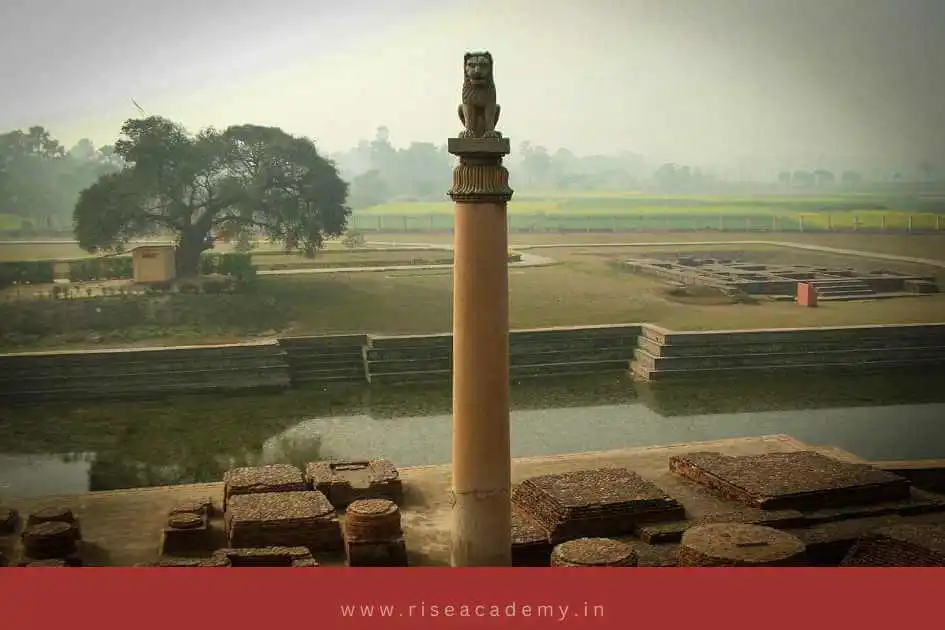
Recognizing the importance of healthcare, he arranged for medical treatment for both humans and animals and made provisions for free medicines. These initiatives were part of a broader policy of Dhamma that emphasized non-violence and welfare measures, including the construction of roads and wells and the planting of trees.
Ashoka’s reign and policies represent a unique chapter in the history of the Mauryan Empire, characterized by a ruler’s attempt to govern through moral and ethical principles. His administrative reforms, commitment to religious tolerance, and dedication to public welfare initiatives left a lasting impact on the empire and its subjects, contributing to a legacy that continues to inspire admiration and respect.
Legacy and Impact
Development and Spread of Buddhism
Ashoka’s profound influence on Buddhism is undeniable. Following his conversion post the devastating Kalinga War, Ashoka embraced Buddhism and became its most formidable patron.
His efforts included the construction of stupas and monasteries across his empire and beyond. He is credited with building 84,000 stupas to house the relics of Buddha, significantly enhancing the visibility and reach of Buddhism. Ashoka also played a crucial role in organizing the Third Buddhist Council, which was pivotal in the development of Buddhism as a structured religion.
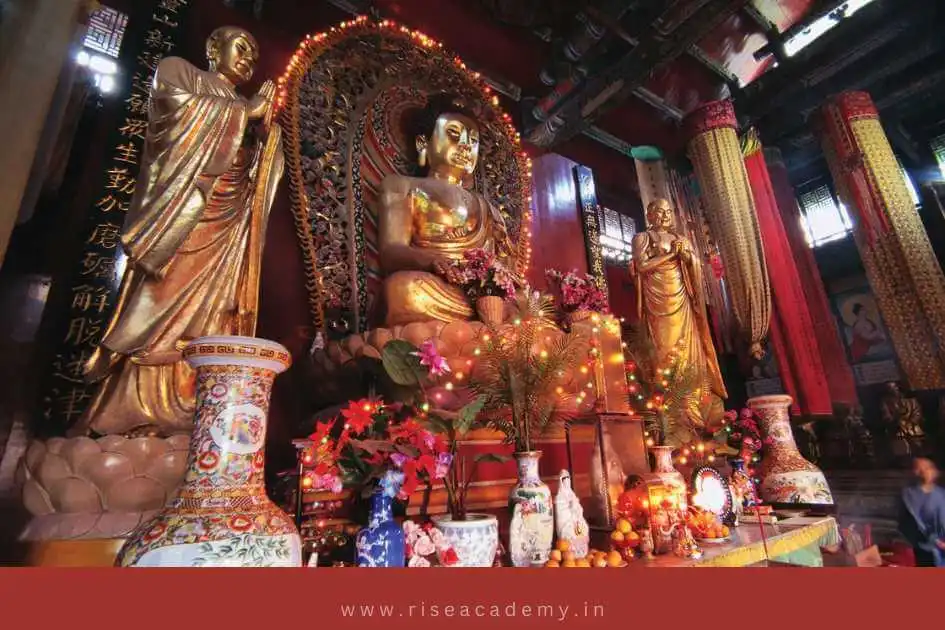
Moreover, Ashoka’s dedication to spreading Buddhism internationally is highlighted by his missionary endeavors. He sent his children, Sanghamitra and Mahendra, to Sri Lanka, where they were instrumental in establishing Buddhism as a major religion. This initiative was part of a broader strategy that saw Buddhist principles reaching as far as Egypt, Greece, and across Asia, laying the foundation for Buddhism’s global presence.
Historical and Cultural Contributions
Ashoka’s reign marked a significant epoch in the cultural development of the Indian subcontinent. His policies and edicts emphasized moral governance and ethical conduct, which were disseminated widely through inscriptions on pillars and rocks. These edicts not only served as a tool for governance but have also provided modern scholars with critical insights into his philosophy and administrative innovations. Ashoka’s approach to governance, which prioritized Dharma (righteousness), set a new standard for rulership in ancient India, influencing subsequent generations and rulers across various regions.
The cultural impact of Ashoka’s reign is also evident in the arts, particularly through the patronage of Buddhist architecture and sculpture, which flourished under his rule. The artistic expressions from his era have helped define the visual narrative of Buddhism, influencing religious art across Asia.
Ashoka’s Place in Modern India
Ashoka’s legacy continues to resonate deeply in modern India. The national emblem of India, featuring the Lion Capital of Ashoka, and the Ashoka Chakra at the center of the Indian flag, underscore his enduring influence on India’s national identity. These symbols serve as a reminder of his philosophy and the moral principles he stood for, particularly his advocacy for peace and non-violence.
Ashoka’s model of leadership, emphasizing tolerance and welfare, remains relevant today as it exemplifies a governance style that respects diversity and seeks to promote social harmony. His efforts to integrate various cultural and religious communities under a common ethical framework were revolutionary at the time and continue to inspire contemporary discourse on governance and morality.
In conclusion, Ashoka’s legacy is multifaceted, encompassing religious, cultural, and nationalistic elements. His transformation from a conqueror to a propagator of peace and Dharma has made him a lasting symbol of enlightened leadership and ethical governance.
Conclusion
Through the prism of historical reflection and analysis, the narrative of Ashoka the Great emerges as a beacon of transformative leadership, underpinning the profound shift from conquest to compassion within the Mauryan Empire. His reign, steeped in the ethos of Buddhism and nonviolence, not only sculpted the moral framework of his time but also laid down a legacy of ethical governance that transcends centuries. The policies and reforms he implemented, grounded in welfare and religious tolerance, have charted a course in the annals of history, showcasing the enduring power of moral conviction in the realm of leadership.
Ashoka’s significance, woven into the cultural and philosophical tapestry of the Indian subcontinent and beyond, illuminates the potential impact of enlightened governance. His legacy, symbolized by the Lion Capital and the Ashoka Chakra, continues to inspire a vision of societal harmony and peace in modern discourse. The saga of Ashoka the Great, thus, concludes not merely as a historical account but as a resonant guidepost for contemporary and future generations, advocating for compassion, tolerance, and the welfare of all beings as the cornerstones of leadership and governance.

